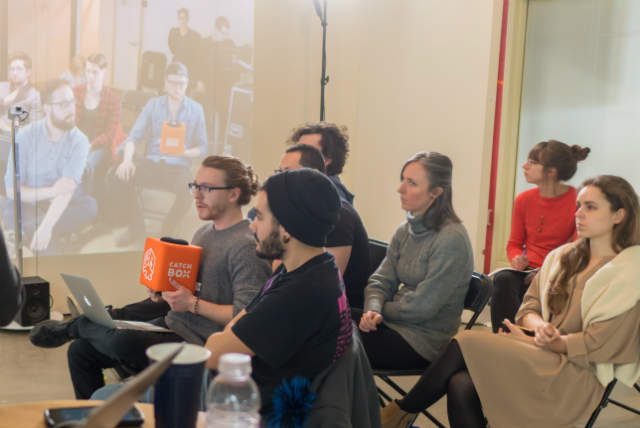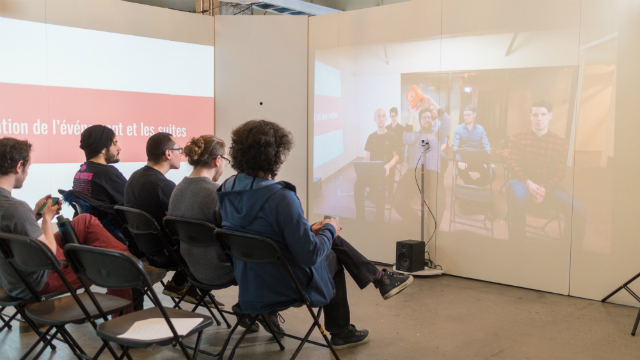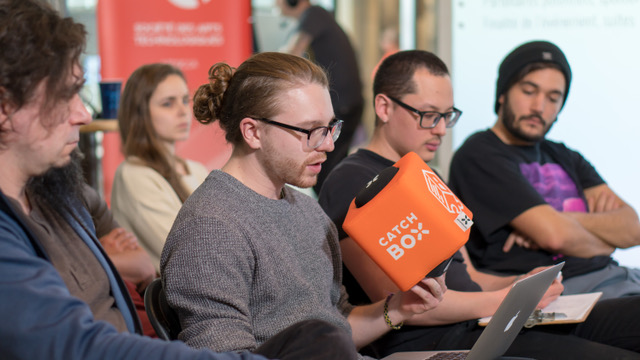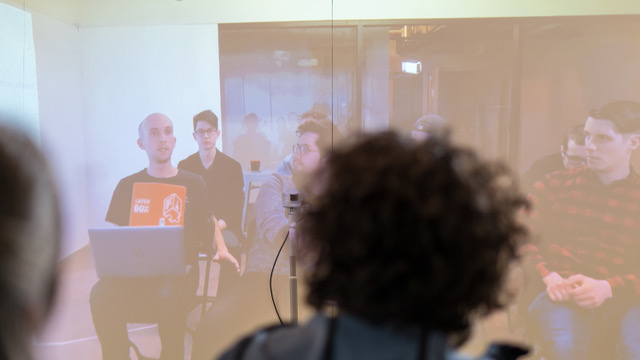Society of Arts and Technology
Catchbox case study

Published on: May 25, 2018
Once in a while, Catchbox is involved in an exciting project. SAT contacted us with their idea of an amazing project – the Bibliolab and we saw an opportunity how Catchbox could help this project. In this case study, we dive into the challenges faced along the way while inventing something new.
Who are they?
Founded in 1996, the Society of Arts and Technology [SAT] is a non-profit organization recognized internationally for its active, leading role in developing immersive technologies, virtual reality and creative use of high-speed networks. With its triple mission as a center for artist residencies, for research, and for training, as well as a venue, SAT was created to support a new generation of creators/researchers in the digital age.
We got in touch with SAT when they were developing the Bibliolab project and integrated Catchbox throwable microphone with their invention. Now SAT has tested Bibliolab and we’re getting back in touch to see how it went!
What is Bibliolab?
Bibliolab is a device based on their own telepresence technology by their research department (Metalab) to enable low latency transmission of audio, visual and data between several locations.
At SAT, all the innovations are first thought to support artists, but most of the time they can transfer into other purposes. They currently work in collaboration with Montreal public libraries, to explores cultural, education and collaborative scenarios with different groups of people, from young children to business people or elders.
The Bibliolab installation is set in a corner of a room. It comes with 2 preset scenographies, for a conference like presentations, or face to face discussions with a distant group. 2 libraries equipped with Bibliolab can connect and organize distributed events hosting 20 participants in each location. For example, it can be storytelling with 1 reader in each location, training where the distant students can participate as well as the local ones, or work sessions gathering people for a brainstorm.

What was the challenge?
SAT aim is to facilitate encounters and interactions between distant groups. They work with a new technology but they want to make it easy to understand and natural for people to use it. For example, it is important that people can look at each other in the eye, use body language etc. As SAT shares for a moment they were trying to record ambient sound, because they wanted to offer an experience very close to being physically together, so they did not want to have people use microphones. In most cases, they had too much trouble with echo, Larsen, etc.

How did Catchbox help?
Claire Paillon from SAT shares her experience: “Catchbox, like a microphone, is a good solution for us. It means that we record only the speech of the participant talking, without parasite noises. It also helps with discipline during the discussion because only 1 people can talk at a time. And because it is fun to use for the participants the behaviors are still quite natural, not as if they had to speak in a regular microphone. In addition, it is also less fragile than a regular microphone and we are not afraid it falls down on the floor!”
We here at Catchbox are very proud and excited to be a part of something new and innovative. We love when we can come together with people who explore new ways how to use Catchbox throwable microphone.
